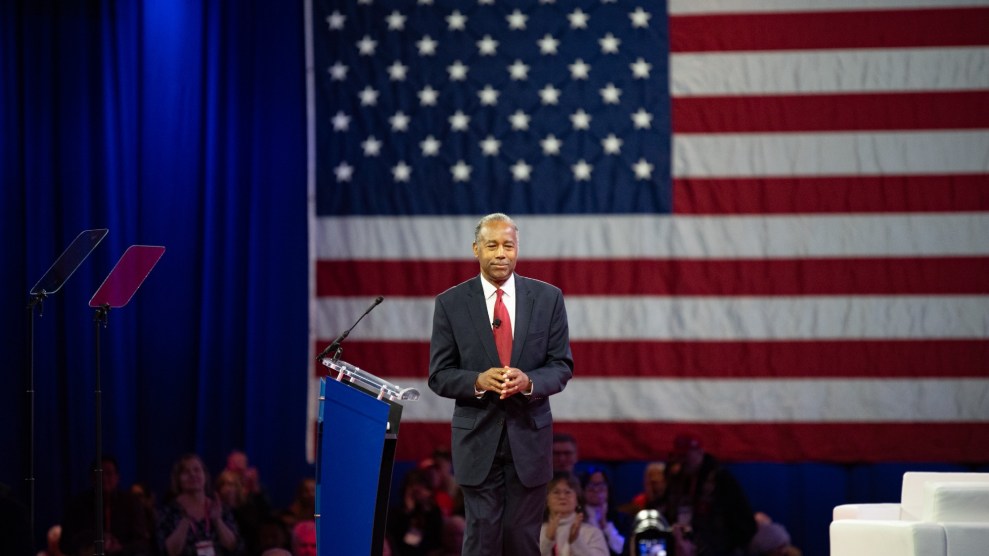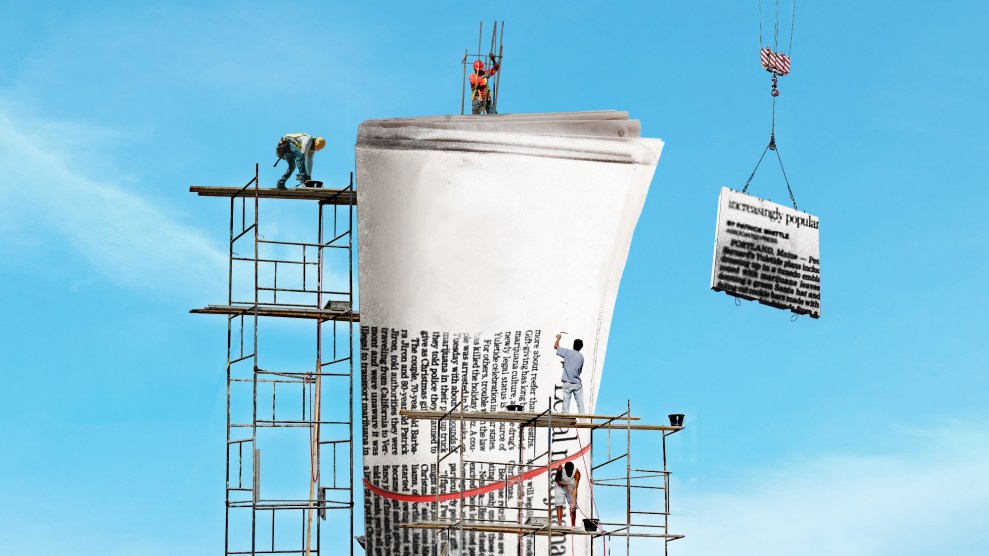Like VW Beetles, quiz shows, and Shaft, student activism is back. A record 46 percent of college freshmen joined public protests last year, the largest percentage since UCLA’s Higher Education Research Institute began tracking the trend in 1966.
This year’s cause célèbre was the campaign to end the use of sweatshop labor by the $2.5-billion collegiate apparel industry. Undergraduates nationwide demanded their colleges quit the Fair Labor Association (FLA) — an industry-backed watchdog that opponents liken to a fox guarding the hen house — and join the Worker Rights Consortium. Founded by students, academics, and labor unions last October, the WRC promises strict workplace oversight, free from industry influence.
With rallies, sit-ins, hunger strikes, and even marches in the nude, student activists pressured more than 50 schools to embrace the fledgling WRC. But sweatshops weren’t the only issue galvanizing campus protest: Affirmative action, body politics, and living wage concerns also got their due. Herewith, some memorable moments from an action-packed year of protest.
1. University of Oregon While Eugene was gaining notoriety as the anarchist capital of America, U of O students were busy flexing their organizing muscle. Months of protests — including mock sweatshop demonstrations in which students hunched over sewing machines for 14-hour shifts — led Oregon to join the WRC last spring. The move provoked the ire of Phil Knight, Oregon alum and CEO of Nike, which is a founding member of the FLA. He withdrew a $30-million pledge to the school’s athletic program and vowed he’d never give again.
2. University of Michigan Student protests, capped by a three-day occupation of the dean’s office, pushed Michigan to join the WRC. Swooshing mad, Nike nixed a six-year licensing contract that would have paid the university $22 million. Minority students also crusaded against racial insensitivity, protesting Michigamua, a century-old secret society whose traditions include adopting phony American Indian names and quaffing beer from sacred tribal artifacts. For 37 days, protesters occupied the society’s private, wigwam-themed headquarters on the top floor of the student union. When the smoke cleared, Michigamua members had returned the artifacts and opened their penthouse to the public.
3. Florida A&M University Three thousand students from the historically black A&M campus stormed the Tallahassee Capitol in protest of Governor Jeb Bush’s “One Florida” policy. The initiative sounds inclusive but effectively wipes out affirmative action in state university admissions. Student leaders met with Bush and won a concession to exempt graduate and professional students from the policy.
4. University of Washington The native soil of Starbucks and Microsoft also yielded a bumper crop of activists criticizing the global economy. Some 1,500 UW students took to the streets in February to protest the World Trade Organization’s ministerial meetings, comprising roughly 5 percent of the crowd at the Battle of Seattle.
5. National Autonomous University of Mexico In the spring of 1999, the largest university in the Americas announced a tuition hike — from the equivalent of 4 cents to $110 — that would place higher education out of reach for thousands of low-income Mexicans. In protest, more than 2,000 student radicals shut down the Mexico City campus, leading the university to reclassify the fees as “voluntary.” But strikers held out — for an additional eight months — calling for an end to new library and lab fees, and for a greater voice in university affairs. Police stormed the campus in February, arresting 800. The university’s 270,000 students soon resumed classes — monitored by some 2,500 federales.
6. Ohio State University To illustrate the skewed logic of spending $187 million to renovate the football arena while denying janitors and cafeteria workers a living wage, Buckeye students and union members picketed and successfully halted construction at Ohio Stadium for a day. The protesters eventually won a $2 hourly raise for 1,900 university employees.
7. Wesleyan University Demanding living wages, health benefits, and job security for the university’s janitorial staff, 35 students seized the Wesleyan admissions office for 33 hours in April. President Douglas Bennet responded quickly after the protest: Janitors saw their hourly wages increase 20 percent and also won gains in their health care and pension packages.
8. University of California, Berkeley Berkeley and its nine sister UC campuses joined the WRC this spring, giving it the backing of an additional 175,000 students. Cal Bears also challenged the propriety of a $25-million grant from drug giant Novartis, which gives the company broad rights to discoveries made within the College of Natural Resources. Protests and teach-ins helped win a state hearing on the issue and focus national attention on the eroding wall between the ivory tower and Wall Street.
9. Columbia University After three years of teach-ins, rallies, and marches by student activists, Columbia adopted the nation’s most progressive sexual misconduct policy. Thanks to the newly amended disciplinary code, defendants in sexual misconduct cases at Columbia can now be barred from the hearing room when accusers detail their complaints; a new full-time arbitrator will field sexual grievances; and staff and students alike will receive stepped-up education about sexual assault.
10. State University of New York, Albany Student agitation forced SUNY Albany to cancel its dining hall contracts with Sodexho Marriott. Sodexho’s parent company is the largest shareholder in Corrections Corporation of America, a leading purveyor of for-profit prisons. In addition to the prison connection, students denounced the company’s health and labor records. Events at SUNY Albany have energized similar campaigns against Sodexho contracts at nearly 30 colleges nationwide.
— Additional reporting by Katarzyna Lyson, Monique Murad, and Trevor Stordahl















